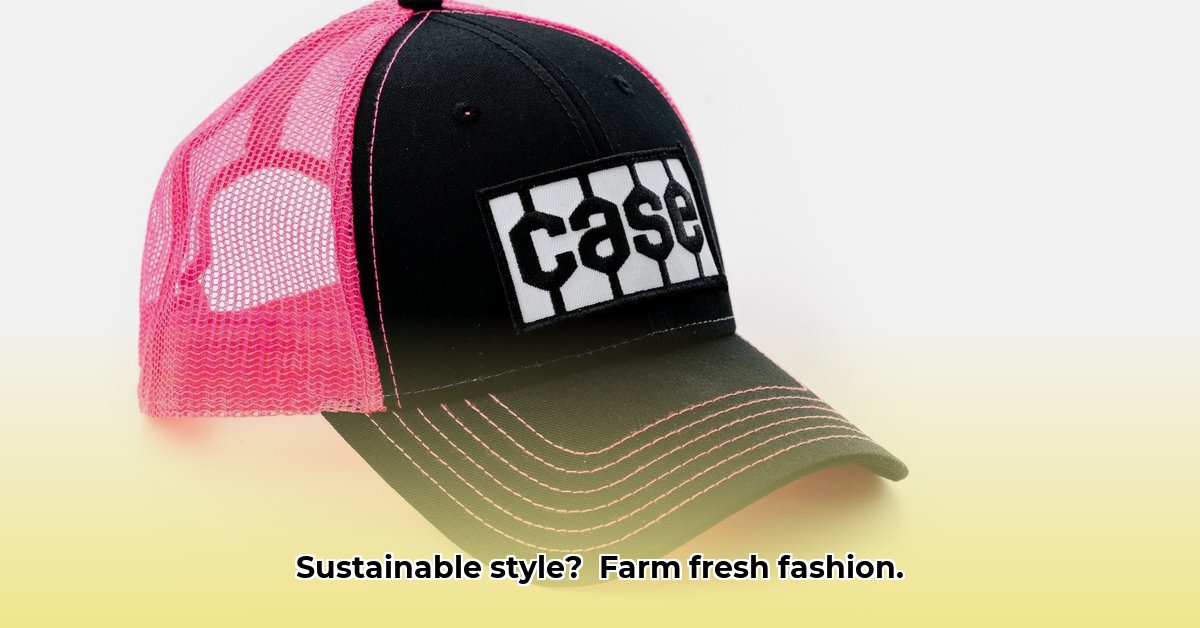
Case Tractor Hats: A Symbol of Sustainable Agriculture
Imagine a sun-drenched field, the scent of freshly turned earth hanging in the air. A farmer, weathered but resolute, works diligently, shielded from the elements by a familiar, comfortable hat – a Case tractor hat. But this isn't just any hat; it’s a symbol of a growing movement toward sustainable practices in agriculture. This article explores the world of sustainable farm apparel, using the Case tractor hat as a compelling example. We'll delve into why sustainable choices matter, the obstacles to creating eco-friendly workwear, and what steps farmers, manufacturers, consumers, and governments can take to cultivate a more sustainable future. For more on Case tractors, check out Case tractor specs.
The Case tractor hat, frequently seen adorning farmers in fields across the country, is gaining recognition for its OEKO-TEX Standard 100 certification. What does this mean? Simply put, OEKO-TEX certifies that the hat's materials have undergone rigorous testing to ensure they're free from harmful chemicals. This is profoundly important, not only for the farmer's well-being but also for environmental health. Fewer harmful chemicals translate to decreased pollution and a healthier ecosystem.
The Broader Landscape of Sustainable Farm Apparel
But the significance of the Case tractor hat extends beyond a single product. It highlights a broader trend: a rising demand for sustainable apparel within agriculture. Consumers are increasingly cognizant of the environmental footprint of their purchases, and this includes their work clothing. There’s a growing movement towards responsible choices, reflecting a widespread understanding that environmental stewardship is paramount, even in seemingly small aspects like farming attire. The question remains: how do we create environmentally friendly farm attire without compromising quality and functionality?
This is a complex issue. Creating truly sustainable apparel requires a holistic approach, incorporating sustainability into every stage of the garment's life cycle. This begins with sourcing materials – incorporating organic cotton or recycled fabrics instead of environmentally damaging alternatives. It also necessitates ensuring the manufacturing process is itself environmentally responsible, minimizing water consumption, energy usage, and upholding fair labor practices throughout the supply chain. This is a considerable challenge, but one that an increasing number of businesses are actively tackling.
Stakeholder Perspectives and Actionable Steps
The transition to sustainable farm apparel requires a collaborative effort. Manufacturers must invest in research and development, searching for innovative, affordable, and durable sustainable materials. Farmers must actively seek out and champion these eco-friendly products, while consumers have a critical role in driving demand by supporting brands committed to sustainability. Governments and NGOs can further expedite this transition through policy incentives, research funding, and public education initiatives.
1. Manufacturers: Embrace OEKO-TEX and similar certifications. Commit to transparent supply chains and develop financially viable, sustainable business models. Goal: Achieve 80% sustainable material usage by 2027.
2. Farmers: Prioritize durability and sustainable materials in workwear purchases. Actively support brands demonstrating commitment to sustainability. Goal: 50% increase in adoption of sustainable workwear by 2028.
3. Consumers: Demand greater transparency from brands. Support businesses prioritizing ethical and environmentally responsible practices. Goal: 30% increase in consumer demand for sustainable apparel over the next 3 years.
4. Governments/NGOs: Provide financial incentives for manufacturers adopting sustainable practices. Fund research into innovative sustainable textiles and manufacturing techniques. Goal: Introduce policy incentives resulting in a 20% reduction in the environmental impact of farm apparel production by 2030.
Challenges and Opportunities: Navigating the Path to Sustainability
The pathway to fully sustainable farm apparel is fraught with obstacles. Sustainable materials often command higher production costs, posing a significant barrier for budget-conscious farmers. Scaling production to meet increasing demand presents another challenge. We must find ways to produce sufficient quantities of high-quality sustainable clothing without significantly increasing prices. Ensuring transparency and traceability throughout the supply chain is crucial; consumers need to know precisely where materials originate and how the garments are manufactured.
However, opportunities also abound. Innovation in materials, more efficient manufacturing processes, and technologies like blockchain can play a crucial role in overcoming these challenges. Increased consumer knowledge and awareness can further drive demand, accelerating the transition to a more sustainable future.
Looking Ahead: A Collaborative Vision
The Case tractor hat, with its OEKO-TEX certification, offers a glimpse into a more sustainable future for farm apparel. It symbolizes the potential to combine tradition with innovation, durability with sustainability. While considerable challenges remain, it's crucial that manufacturers, farmers, consumers, and governments collaborate to create a truly sustainable apparel sector, one hat, one garment, one step at a time. The journey towards a greener future in agriculture requires a collective effort – a collaborative vision for a sustainable tomorrow.